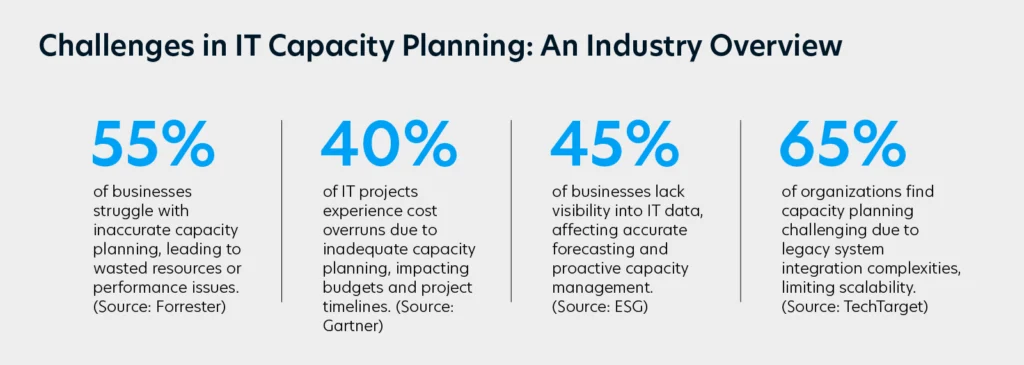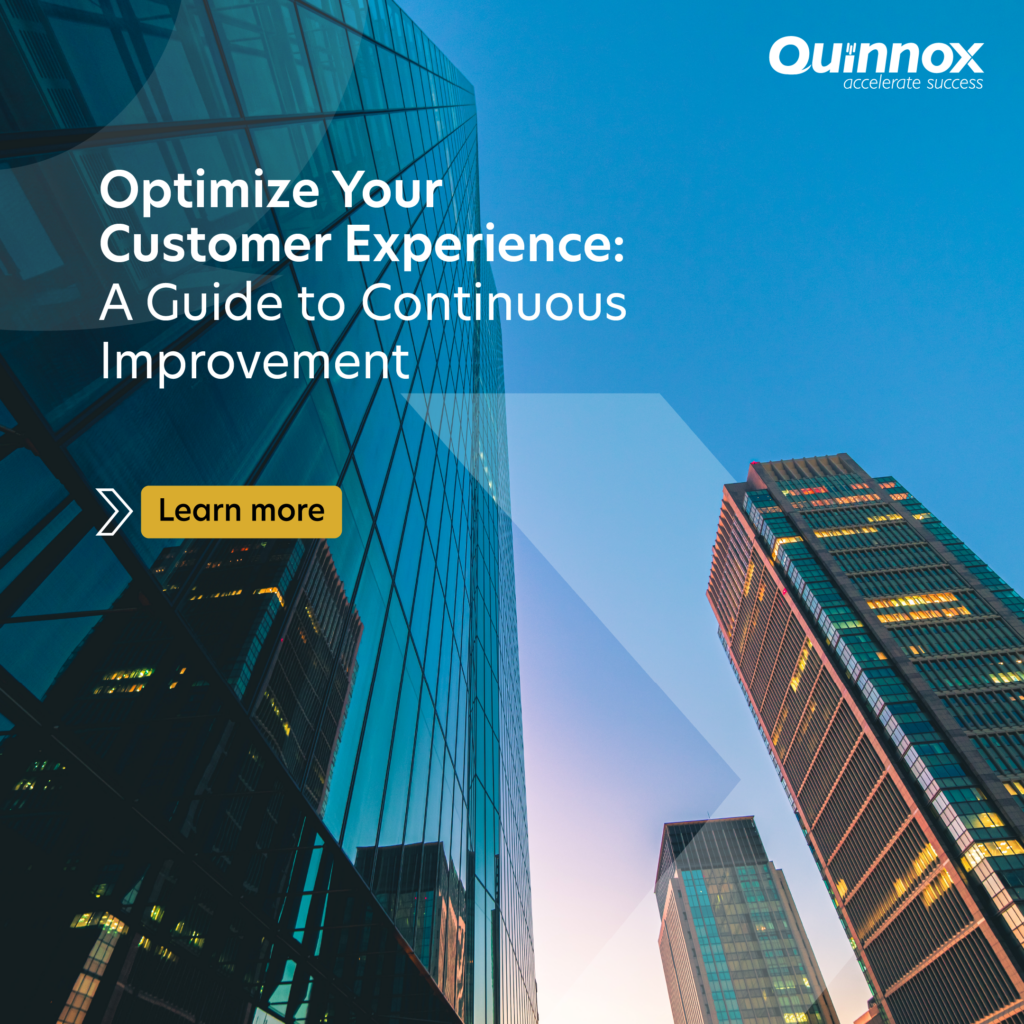Next-Gen Retail: How AIOps is Reshaping the Customer Journey
With the retail industry undergoing significant transformation, retailers can leverage AI for operational efficiency and seamless customer experience
Read moreAutomation in IT operations enable agility, resilience, and operational excellence, paving the way for organizations to adapt swiftly to changing environments, deliver superior services, and achieve sustainable success in today's dynamic digital landscape.
Next-generation application management fueled by AIOps is revolutionizing how organizations monitor performance, modernize applications, and manage the entire application lifecycle.
AIOps and analytics foster a culture of continuous improvement by providing organizations with actionable intelligence to optimize workflows, enhance service quality, and align IT operations with business goals.
In an era where digital transformation is reshaping industries, the role of IT infrastructure in driving business success cannot be overstated. With businesses navigating unprecedented levels of data, traffic, and operational demands, the ability to anticipate, optimize, and scale IT resources effectively is a cornerstone of success.
However, traditional capacity planning methods often fall short in addressing the dynamic and evolving nature of modern business environments. According to Gartner, by 2025, nearly 80% of organizations will face consequences stemming from inadequate capacity planning, emphasizing the critical need for strategic foresight in managing IT infrastructure.
This blog explores the pivotal role of IT capacity planning, delving into the shortcomings of traditional approaches, and exploring how AIOps predictive capacity stands as a transformative force can empower businesses to not only adapt but thrive amidst constant technological disruptions and market shifts.
Capacity planning in IT infrastructure revolves around predicting the required resources – such as computing power, storage, and network bandwidth – to support current and future business operations effectively. By analyzing historical data, usage trends, and growth forecasts, organizations can anticipate capacity needs, identify bottlenecks, and proactively allocate resources to maintain optimal performance.

Traditional approaches to capacity planning in IT infrastructure often relied on legacy systems and reactive strategies, leads to inefficiencies and resource wastage hindering organizations from unlocking their full potential and staying competitive in an ever-changing market landscape.
Let’s delve into the traditional dilemma and explore the key challenges faced in capacity planning within IT infrastructure:
Organizations often wait until they encounter performance issues or resource constraints before addressing capacity requirements. This reactive approach can lead to delays in scaling resources, resulting in downtimes, system inefficiencies, and suboptimal performance.
Manual processes dominate traditional capacity planning methods, relying heavily on spreadsheets, manual data collection, and human analysis. Such manual approaches are time-consuming, error-prone, and lack the scalability needed to handle the complexities of modern IT environments. Moreover, the absence of automation limits the ability to analyze data swiftly and make informed decisions efficiently.
Organizations may lack the tools and technologies required to analyze historical data trends, anticipate future capacity needs accurately, and forecast resource requirements effectively. This deficiency in data analysis hampers the ability to align capacity with business goals and operational demands.
Scalability remains a significant challenge for traditional capacity planning methods. Organizations may find it challenging to scale resources dynamically in response to changing workloads, seasonal fluctuations, or unexpected spikes in demand. Without the flexibility to adapt quickly to shifting requirements, businesses risk either underutilizing resources or facing performance bottlenecks due to inadequate provisioning.
Another obstacle in traditional capacity planning is the lack of real-time visibility into system performance and resource utilization. Without continuous monitoring and robust reporting mechanisms, organizations struggle to identify bottlenecks, predict capacity constraints, and optimize resource allocation effectively. The absence of comprehensive visibility hinders the ability to make informed decisions and proactively manage capacity.
The insurtech revolution is in full swing, reshaping the insurance landscape and redefining customer expectations. Insurtech companies are leveraging technology to streamline processes, reduce costs, and deliver a more personalized experience.
Insurers are partnering with insurtech firms to integrate disruptive technologies such as blockchain for secure transactions, IoT for risk monitoring, and AI for predictive analytics. The most important insurance operations, such as underwriting, fraud prevention, claims processing, etc., are addressed by these solutions.
For example, Hippo uses AI for claims processing, reducing average settlement times from weeks to days
As technology advances, businesses are transitioning towards proactive capacity planning strategies that leverage predictive analytics and automation tools.
According to Gartner, by 2025, over 70% of organizations will embrace predictive analytics for infrastructure capacity planning, highlighting the growing trend towards predictive capacity optimization in the digital age.
The integration of AIOps in IT capacity planning represents a paradigm shift from reactive, manual approaches to proactive, data-driven methodologies. By leveraging advanced algorithms, machine learning, and automation, AIOps platform enables businesses to forecast capacity requirements accurately, identify potential bottlenecks, and optimize resource utilization proactively, helping them make informed decisions, streamline operations, and enhance overall efficiency.
The below figure showcases the Gartner Use-Case Prism that identifies Infrastructure Predictive Capacity as one of the key areas for identifying AI opportunities:

Furthermore, lets discuss the myriad benefits that organizations can harness through strategic infrastructure capacity planning using AIOps:
Agility and Responsiveness: AIOps enables organizations to respond swiftly to changing business needs and market dynamics by predicting capacity requirements and optimizing resource allocation in real time.
Cost Optimization: By accurately forecasting capacity needs, organizations can avoid over-provisioning resources, reduce unnecessary expenditures, and optimize their IT budget effectively to increase cost savings and improve financial sustainability.
Data-Driven Decision-Making: AIOps provides data-driven insights and actionable intelligence that empower IT teams to make informed decisions regarding capacity planning, infrastructure investments, and performance optimization.
Operational Excellence: By automating routine tasks, streamlining processes, and enhancing system visibility, AIOps drives operational excellence, reduces operational costs, and improves IT service delivery.
Innovation and Scalability: AIOps fosters innovation by enabling organizations to experiment with new technologies, scale infrastructure resources dynamically, and adapt to evolving business requirements with agility and efficiency.
Discover why investing in AIOps is a game-changer for your business. Access our Qinfinite value calculator today!
Quinnox’s innovative AIOPs platform Qinfinite played a pivotal role in transforming infrastructure predictive capacity planning for a U.S.-based high-tech company specializing in discrete manufacturing of telecommunication products.
Faced with challenges posed by an overstretched IT infrastructure due to expanding product lines and surging data demands, the company was initially advised to undergo a costly 60% capacity increase. However, Quinnox proposed implementing Qinfinite’s Auto Optimize solution, which involved maintaining core operations on-premise while leveraging cloud solutions for scalability.
By deploying Qinfinite’s Auto Optimize, incorporating auto discovery, knowledge graph mapping, predictive analytics, and hybrid infrastructure management, the company achieved remarkable outcomes:
Cost Savings: The predictive scaling allowed the company to avoid the proposed $10 million expenditure, significantly reducing their operational costs.
High Availability: With real-time adjustments and predictive resource allocation, system availability remained at a stellar 99.999%, crucial for their 24/7 manufacturing operations.
Scalability and Flexibility: The hybrid model provided the flexibility to scale up resources during product launches and high-demand periods without permanent investment in infrastructure.
To explore and visualize your IT ecosystem through our Knowledge Graph, you can exclusively try our Qinfinite Sandbox.
The strategic utilization of infrastructure predictive capacity and proactive capacity planning emerges as a crucial differentiator for success in an increasingly complex and dynamic digital landscape. By leveraging predictive analytics, AI technologies, and best practices in capacity optimization, organizations can future-proof their infrastructure, drive operational efficiencies, and accelerate growth in a rapidly evolving market environment.
As Gartner projects the pervasive adoption of predictive analytics in infrastructure planning, businesses that prioritize predictive capacity strategies today are poised to thrive tomorrow.
Remember, the road to sustainable success begins with strategic foresight and proactive planning!
Meanwhile, to know more about how Qinfinite, request for a demo today!




Want to know more about CX? Read interesting blogs below!
With the retail industry undergoing significant transformation, retailers can leverage AI for operational efficiency and seamless customer experience
Read moreBusinesses can ride the wave of automation and innovation with AIOps and gain sustainable growth advantage for measurable success
Read moreIn an era where digital transformation is reshaping industries, the role of IT infrastructure in driving business success cannot be overstated
Read moreGet in touch with Quinnox Inc to understand how we can accelerate success for you.